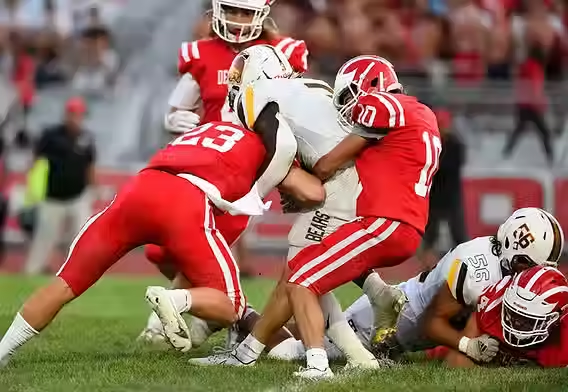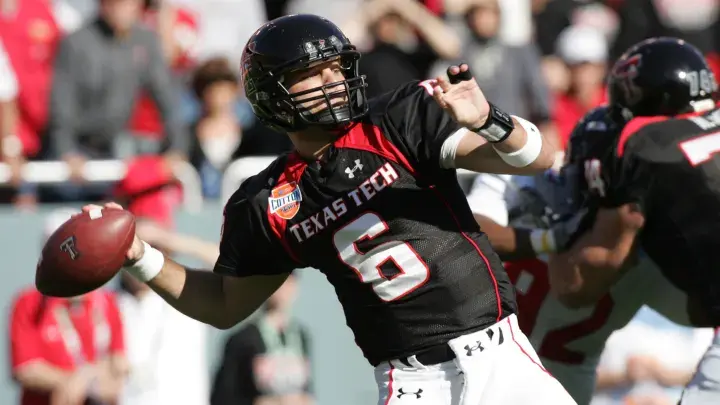You Are F***ing Up Mesh!
- Hal Mumme

- May 22
- 4 min read
Well, this is my opinion about how people are f***ing up mesh. I'm pretty happy to see everybody running it and for years we were the only ones doing it, us and BYU. We got it from BYU and we ran it like they did until 1991 and then we made some additions to it and some little minor adjustments, but they really paid off big time and from then on, in 1991 when we called it 52 times in one game and reading man or zone by the meshers and climbing or sitting was a major major deal that we started doing and if they got man to man, they would climb slightly up the field and the throw would be kind of a flat arc, probably about 10 to 15 yards down the field. If they got zone and they sat in the biggest hole and then the throw would now be like a dart to one shoulder or the other depending on where the defender was and turning straight up field after catching that dart was really important and to learn to turn with the throw so that you turn straight up and avoid the first defender.
I see a lot of people, they run it and they just run across, they mesh and then they just keep going and they kind of flatten out. You see a lot of them, particularly in the NFL, where they end up catching the ball near the sideline so they end up with a five-yard gain instead of what they could have had and I think this is one of the major problems with people that do it it's just a play for us it was a way of life and so we had this little drill and you people that are already air raid certified you all know about this you got to devote to it, if you're pro football you got to devote about two or three minutes to this drill in high school or college football it probably takes about five or six because you just simply have more receivers but it teaches you to recognize man or zone and like I said climb or sit so that's that's the first screw-up I see all the time and the other screw-up I see which is kind of infuriating is that the play was originally designed for a deep throw to in our case it was our Z on either a post or a corner or an out cut or even just a go route if you got man to man.

So it was designed for the quarterback to look there first. And then we swing the back out of the backfield and he's number two. What I see nowadays is everybody's using what we used to call at Valdosta State and Kentucky and New Mexico State, we called it Blazer.
And it's where you take the meshers and they sit outside the hash marks and then you bring the Z or whoever is your deep route in on a, like a dig or a curl over the middle. You try to split the coverage with the meshers and then it opens up a throwing lane for the curl at about 15 or 18 yards.
That was always an adjustment play for us. That's one of the things that, you know, I always tell play callers, young play callers, you got to be able to have a punch. It's like being a boxer. You got to have one great punch, right?

Maybe a right, you know, or maybe you got a great jab. I mean, you got to have some punch that you're great at. And then after that, you have a counter punch. So you get a guy leaning in one way and then counterpunching.
Well, it's like that in play calling too. Don't counterpunch before you've punched. You have to punch you a whole bunch of times before you can counterpunch. And that's what is happening with the mesh play, particularly A lot of places I see they only run it one way and it's always just our counterpunch.
Our counterpunch was for deep cover two on third and long and that's the only time we ever called it and it resulted in some spectacular plays where we would have maybe third and fifteen or third and twenty and end up making it up.
We beat Nevada Reno one year when I was at New Mexico State with it and the year they had Kaepernick and were picked as co-favorites for the conference. We went out and beat them at a very close game and we converted four fourth down throws to let us keep the ball on them and a couple of them were blazer because we knew that they were going to be in a deep cover two and so when we got fourth and long or fourth and ten or whatever we would call it and we hit it a couple of times and it was a really big play for us.
But that's the counterpunch. The reason it works is because you run mesh so much that they get used to trying to stop that. And then when you do catch them in a deep cover two, then you can counter punch them.
So that's my observation of what I'm seeing right now, watching games and watching a lot of pro football. There's just a misguided opportunity to try to have an easy play that is just in your playbook, and you don't practice it very much, and then you try to pull it out at the right time.
For us, it was, like I said, it was a way of life. And we were going to be able to have a play that would react to whatever the defense did, and we knew what to do, and we could call it over and over again with some minor adjustments and really give the defense fits with it.
But that is my opinion on why people are f***ing up mesh.







The mesh clip above…Blue Flip X-Fly 92 ???